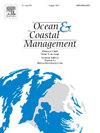Are efficient ports for port operators also those for shipping companies? A meta-frontier analysis of global top 80 container ports
IF 4.8
2区 环境科学与生态学
Q1 OCEANOGRAPHY
引用次数: 0
Abstract
Ports operate in complex environments, each with a unique operating context and multiple stakeholders. Considering port heterogeneity, this paper classifies the world's top 80 container ports into homogenous groups and employs the meta-frontier Data Envelopment Analysis (DEA) method to assess their efficiency. Recognizing the different interests of port operators and shipping companies in port, we incorporate relevant variables for the two stakeholders and compare the port efficiencies evaluated from the two perspectives. The findings are achieved with a dataset comprising port data collected from Lloyd's List, IHS Markit, and Google Earth, alongside ships' data extracted from the Automatic Identification System (AIS). The analysis reveals the disparities in port efficiency among different stakeholders and across different port sizes. Among the 80 container ports, only 4 achieved dual efficiency, while 17 were identified as one-sided frontier ports. Large ports demonstrate relatively consistent efficient performance from both perspectives, benefiting from economies of scale and efficient service delivery. In contrast, small and middle-size ports show inconsistent or even opposing efficiency performance when evaluated by port operators and shipping companies, with many exhibiting low levels of resource utilization or service delivery. This study provides a reference for port operators and shipping companies to enhance overall efficiency.
港口经营者的高效港口是否也适用于航运公司?全球前80名集装箱港口的元前沿分析
港口在复杂的环境中运营,每个港口都有独特的运营背景和多个利益相关者。考虑到港口的异质性,本文将全球排名前80位的集装箱港口划分为同质组,并采用元前沿数据包络分析(DEA)方法对其效率进行评估。认识到港口运营商和航运公司在港口的不同利益,我们纳入了两个利益相关者的相关变量,并比较了从两个角度评估的港口效率。这些发现是通过一个数据集获得的,该数据集包括从劳氏船级社、IHS Markit和谷歌Earth收集的港口数据,以及从自动识别系统(AIS)提取的船舶数据。分析揭示了不同利益相关者和不同港口规模之间港口效率的差异。80个集装箱口岸中,实现双效的仅有4个,被认定为单边边境口岸的有17个。从这两个角度来看,大型港口都表现出相对一致的高效绩效,受益于规模经济和高效的服务提供。相比之下,在港口运营商和航运公司的评估中,中小型港口表现出不一致甚至相反的效率表现,许多港口表现出低水平的资源利用或服务提供。本研究为港口营运商及航运公司提升整体效率提供参考。
本文章由计算机程序翻译,如有差异,请以英文原文为准。
求助全文
约1分钟内获得全文
求助全文
来源期刊

Ocean & Coastal Management
环境科学-海洋学
CiteScore
8.50
自引率
15.20%
发文量
321
审稿时长
60 days
期刊介绍:
Ocean & Coastal Management is the leading international journal dedicated to the study of all aspects of ocean and coastal management from the global to local levels.
We publish rigorously peer-reviewed manuscripts from all disciplines, and inter-/trans-disciplinary and co-designed research, but all submissions must make clear the relevance to management and/or governance issues relevant to the sustainable development and conservation of oceans and coasts.
Comparative studies (from sub-national to trans-national cases, and other management / policy arenas) are encouraged, as are studies that critically assess current management practices and governance approaches. Submissions involving robust analysis, development of theory, and improvement of management practice are especially welcome.
 求助内容:
求助内容: 应助结果提醒方式:
应助结果提醒方式:


